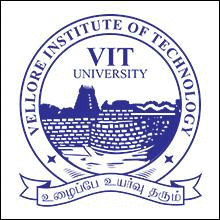Science and Technology: May 2024 Current Affairs | Current Affairs: Daily, Weekly & Monthly - CLAT PDF Download
West Nile Fever
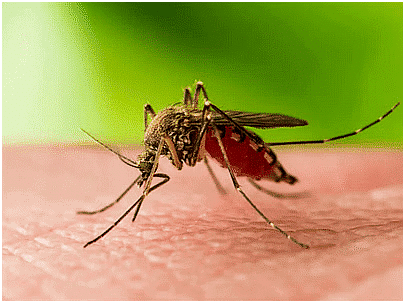
Context
Kerala's health department recently reported West Nile fever cases in three districts.
About West Nile Fever
West Nile Fever is caused by the West Nile Virus (WNV), a member of the flavivirus genus within the family Flaviviridae. It was first identified in Uganda's West Nile district in 1937.
- Transmission: The virus primarily spreads through the bite of infected mosquitoes, which acquire the virus from infected birds. There is no evidence of direct human-to-human transmission, although rare cases through organ transplants have been documented.
- Symptoms: Most infected individuals show no symptoms. Symptoms can include fever, headache, fatigue, body aches, nausea, vomiting, occasional skin rash, and swollen lymph glands. Severe cases may lead to neuroinvasive diseases such as encephalitis, meningitis, or poliomyelitis, characterized by more serious symptoms like high fever, neck stiffness, coma, and paralysis.
- Treatment: Currently, there is no specific medicine or vaccine for WNV. Treatment involves supportive care such as hospitalization, intravenous fluids, respiratory support, and preventing secondary infections.
Xenotransplantation
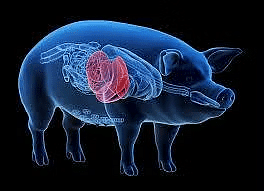
Context
Recently, the initial recipient of a modified pig kidney transplant passed away approximately two months post-surgery.
About
- Xenotransplantation refers to any procedure involving the transplantation, implantation, or infusion of live cells, tissues, or organs from nonhuman animal sources into human recipients, or human body fluids, cells, tissues, or organs that have had ex vivo contact with live nonhuman animal cells, tissues, or organs.
- The first attempts at xenotransplantation involving the heart in humans occurred in the 1980s.
- To avoid rejection by the human body, the selected animal organ must undergo genetic modifications.
- Continuous monitoring post-operation is crucial to assess the body's acceptance of the transplanted organ.
Why Pigs are Often Used for Xenotransplantation?
- Pig heart valves have been successfully used in humans for valve replacement for over five decades.
- Pigs share similar anatomical and physiological characteristics with humans, and their widespread breeding on farms is both extensive and cost-effective.
- The availability of various pig breeds allows for the selection of organs that match the specific requirements of human recipients.
- In January 2022, the first genetically-modified pig heart xenotransplantation was conducted.
Indian Space Situational Assessment Report 2023

Context
The Indian Space Research Organisation (ISRO) has released the Indian Space Situational Assessment Report (ISSAR) for 2023, which provides a comprehensive overview of the current state of India’s space assets and their vulnerability to potential collisions in space.
What does the ISSAR 2023 Report Highlight?
Space Object Population:
- Global Increase: Globally, 3,143 objects were added in 2023 from 212 launches and on-orbit breakup events.
- Indian Additions: India contributed to this with the launch of 127 satellites by the end of December 2023.
- In the year 2023, all seven launches of ISRO, namely SSLV-D2/EOS7, LVM3-M3/ONEWEB 2, PSLV-C55/ TeLEOS-2, LVM3-M4/ Chandrayaan-3, and PSLV-C57/Aditya L-1, were successful.
- A total of 5 Indian satellites, 46 foreign satellites, and 8 rocket bodies (including POEM-2) were placed in their intended orbits.
Indian Space Assets:
- Operational Satellites: As of 31st December 2023, India has 22 operational satellites in Low Earth Orbit (LEO) and 29 in Geostationary Orbit (GEO).
- Deep Space Missions: There are three active Indian deep space missions, Chandrayaan-2 Orbiter, Aditya-L1, and Chandrayaan-3 Propulsion Module.
Space Situational Awareness Activities:
- ISRO regularly carries out analyses to predict close approaches by other space objects to Indian space assets.
- In case of critical close approaches, ISRO carries out Collision Avoidance Maneuvers (CAMs) to safeguard its operational spacecraft.
- About 1 lakh close approach alerts were received from USSPACECOM (US Space Command), and over 3,000 alerts for close approaches within a distance of 1 km were detected for ISRO satellites.
- No close approaches with other space objects were detected for the Chandrayaan-3 mission throughout its mission phases, and also for Aditya-L1 during its Earth-bound phase.
Collision Avoidance Maneuvers (CAMs):
- The report highlights a significant increase in the number of CAMs conducted by ISRO in 2023.
- ISRO conducts Collision Avoidance Analysis (COLA) to assess and prevent potential collisions.
- A total of 23 Collision Avoidance Maneuvers (CAMs) were carried out during 2023 to protect Indian space assets, compared to 21 in 2022 and 19 in 2021.
Satellites Re-entry:
- The report details the successful re-entry of 8 Indian satellites in 2023. This includes the controlled de-orbiting of Megha-Tropiques-1, showcasing ISRO’s commitment to responsible space debris management.
International Cooperation on Space Sustainability:
- ISRO is an active participant in many international fora such as the Inter-Agency Debris Coordination Committee (IADC) with 13 space agencies, the International Academy of Astronautics (IAA) space debris working group, International Astronautical Federation (IAF) space traffic management working group, International Organization for Standardization (ISO) space debris working group and UN-Committee on the Peaceful Uses of Outer Space (COPUOS), contributing to discussions and guidelines on space debris and long-term sustainability of outer space activities.
- ISRO, as the chair of IADC for 2023-24, hosted the 42nd annual IADC meeting in April 2024.
- ISRO participated in the IADC annual re-entry campaign and contributed to the revision of IADC space debris mitigation guidelines and other space sustainability aspects.
Challenge of Space Debris:
- The report also acknowledges the ongoing challenge of space debris. It notes that 82 rocket bodies from Indian launches remain in orbit, with fragments from a 2001 PSLV-C3 mishap still contributing to the total.
Way Forward
- Establish a global framework for Space Traffic Management (STM) to standardise procedures for collision avoidance and inter-operator coordination.
- Promote responsible space practices, including debris mitigation measures and sustainable satellite deployment.
- Encourage innovation in active debris removal and on-orbit servicing technologies.
- Facilitate international collaboration to share resources, expertise, and data for space situational awareness.
- Review and update space regulations to accommodate the evolving needs of the space sector and raise awareness about space sustainability.
Side-Effects of Covid-19 Vaccine

Context
Recently, significant concerns have arisen regarding the adverse effects associated with the Oxford-AstraZeneca vaccine, known as "Covishield" in India and produced by the Serum Institute of India (SII).
What is Thrombocytopenia Syndrome?
About:
- TTS, also known as vaccine-induced prothrombotic immune thrombocytopenia (VIPIT) or vaccine-induced immune thrombotic thrombocytopenia (VITT), is a rare syndrome observed in individuals who have received COVID-19 vaccines using adenoviral vectors.
- It is believed to result from an immune reaction triggered by the adenovirus vector used in these vaccines.
Symptoms:
- TTS is associated with symptoms such as difficulty breathing, chest or limb pain, small red spots or bruising beyond the injection site, headaches, and numbness in body parts.
- Thrombosis refers to the formation of blood clots, while thrombocytopenia indicates a low platelet count.
Risk-Benefit Analysis
Risk:
- TTS predominantly affects healthy young women around thirty years old, occurring at a low frequency of about one to two cases per 100,000 vaccinated individuals.
- At a general population level, it is estimated to occur at about two to three cases per million vaccinated people.
- Despite these risks, the annual risk of TTS is significantly lower than the risk of dying in a road accident.
Benefit:
- Covishield has demonstrated more than 80% effectiveness against severe COVID-19 and over 90% effectiveness in preventing death in various studies, including during the Delta wave.
- Considering a 50% chance of contracting COVID-19 and a 0.1% risk of death without vaccination, the vaccine offers substantial mortality benefits that outweigh its risks.
- Additionally, vaccination reduces disease severity, lessens immediate strain on healthcare systems, and lowers the long-term risk of disabilities, heart attacks, and strokes.
Other Rare Side Effects of COVID-19 Vaccines:
- A study of 99 million people found higher-than-expected cases of Guillain-Barre Syndrome, myocarditis, pericarditis, and cerebral venous sinus thrombosis (CVST) following mRNA and ChAdOX1 (Covishield) vaccinations for COVID-19.
- These conditions are categorized as rare side effects associated with COVID-19 vaccination.
- Regulations and Concerns Related to COVID-19 Vaccination in India:
Regulations Related to COVID-19 Vaccines in India:
- India administered nearly 1.75 billion doses, covering approximately 80% of its vaccinated population.
- COVID-19 vaccines were authorized for use before completing phase-3 trials, with manufacturers lacking complete information on potential short-term or long-term side effects or fatalities.
Concerns Related to COVID-19 Vaccines:
- Several European countries temporarily halted the use of AstraZeneca's vaccine in March 2021 due to reported cases of blood clotting.
- The World Health Organization acknowledged reports of TTS following Covishield and Vaxzevria vaccinations but emphasized that the risk appeared very low based on available data.
- Some countries suspended Covishield use despite its benefits, opting for mRNA vaccines like Pfizer-BioNTech and Moderna, which were more immunogenic and not linked to TTS, although cases of non-fatal myocarditis were reported.
- In 2023, the WHO included vaccine-induced immune thrombotic thrombocytopenia (VITT) in its classification of thrombosis with thrombocytopenia syndrome (TTS).
India’s Stand:
- Before the rollout of COVID-19 vaccines, the Indian government issued a caution in January 2021 advising against Covishield use in individuals with low platelet counts.
- By May 2021, India reported 26 potential cases of blood clots related to Covishield, at a rate of 0.61 cases per million doses.
- The government maintained that the risk was minimal and that Covishield had a positive benefit-risk profile.
- No such events were reported for the indigenous vaccine, Covaxin (by Bharat Biotech).
- The Ministry of Health and Family Welfare of the Government of India noted a lower risk of blood clotting in individuals of South and Southeast Asian descent compared to those of European descent.
Understanding Magnetic Resonance Imaging

Context
Magnetic resonance imaging (MRI) is an essential non-surgical tool for visualizing the internal structures of the human body.
About Magnetic Resonance Imaging
- MRI is utilized to capture images of soft tissues within the body, which have not hardened through calcification.
- This non-invasive diagnostic procedure is widely employed to image various parts of the body such as the brain, cardiovascular system, spinal cord, joints, muscles, liver, and arteries.
- It plays a crucial role in monitoring and treating cancers like prostate and rectal cancer, as well as in tracking neurological conditions including Alzheimer’s, dementia, epilepsy, and stroke.
Working
- An MRI procedure generates images of body parts using the hydrogen atoms present in those parts.
- The technique harnesses the natural magnetic properties of the body to create detailed images. Specifically, the hydrogen nucleus (a single proton) is chosen due to its abundance in water and fat.
- The MRI machine incorporates a superconducting magnet that establishes a stable magnetic field, aligning the spins of hydrogen atoms.
- A radiofrequency pulse is emitted to excite these aligned atoms.
- Once the pulse ceases, these atoms release energy, which is detected and converted into signals by a receiver.
- These signals are processed by a computer to generate detailed 2D or 3D images of the scanned body part.
Artificial General Intelligence

Context
In a recent interview, Sam Altman, CEO of OpenAI, expressed his commitment to invest billions of dollars towards the development of Artificial General Intelligence (AGI).
About Artificial General Intelligence
- It refers to a machine or a software that can perform any intellectual task that a human can do. This includes reasoning, common sense, abstract thinking, background knowledge, transfer learning, ability to differentiate between cause and effect, etc.
- It aims to emulate human cognitive abilities such that it allows it to do unfamiliar tasks, learn from new experiences, and apply its knowledge in new ways.
How is AGI different from AI we already use?
- The main difference between AGI and the more common form of AI, also known as narrow AI, lies in their scope and capabilities.
- Narrow AI is designed to perform specific tasks such as image recognition, translation, or even playing games like chess—at which it can outdo humans, but it remains limited to its set parameters.
- On the other hand, AGI envisions a broader, more generalised form of intelligence, not confined to any particular task (like humans).
Applications of AGI
- Healthcare: It can redefine diagnostics, treatment planning, and personalised medicine by integrating and analysing vast datasets, far beyond the capabilities of humans.
- Finance and business: AGI could automate various processes and enhance the overall decision-making, offering real-time analytics and market predictions with accuracy.
Black Hole Gaia BH3
Context
Recently, astronomers have discovered a massive Black Hole in our Galaxy, named “Gaia BH3”.
- It’s the 2nd-closest known Black hole to Earth. It is 33 times heavier than the sun and the most massive black hole of stellar origin in the Milky Way, surpassing Cygnus X-1.
- Stellar black holes are formed as a result of the collapse of a single star.

What are Black Holes?
About:
- Black holes are extraordinarily dense objects with gravity so strong that not even light can escape, making it difficult to spot them.
- They are formed when a massive star collapses in on itself at the end of its life, creating an incredibly dense object with a gravitational pull that is so strong that it warps space-time around it.
Types of Black Holes:
- Stellar Black Hole: It is formed by the collapse of a single massive star.
- Intermediate Black Hole: Their masses are between 100 and 100,000 times that of the sun.
- Supermassive Black Hole: Their masses ranging from millions to billions of times that of the sun, found at the centres of most galaxies including our own Milky Way galaxy.

Occultation in Astronomy

Context
Recently, the Indian Institute of Astrophysics (IIA) has released a video capturing the occultation of the moon passing in front of the bright red star Antares (Jyeshtha).
What is an Occultation in Astronomy?
About:
- An occultation in astronomy occurs when one celestial body passes in front of another, obscuring it from view.
- Occultations can also be artificially produced to observe certain phenomena in detail. A well-known example is blocking the light of the sun or a star to see nearby objects.
- In lunar occultations, the Moon appears to move in front of other objects in the sky, such as stars, planets, or asteroids.
Lunar Occultations of Stars:
- The Moon regularly occults bright stars as it moves along its apparent path in the sky.
- Approximately 850 naked-eye stars, including prominent ones like Aldebaran (reddish giant star in the constellation Taurus), Regulus (constellation Leo), Spica (constellation of Virgo), and Antares, may be occulted by the Moon in a year.
- During a lunar occultation of a star, the star appears to abruptly disappear as the Moon moves in front of it, demonstrating the lack of atmosphere on the Moon.
Lunar Occultations of Planets:
- Occultations of planets, such as Venus, Jupiter, Mars, and Saturn, by the Moon are notable astronomical events.
- During a lunar occultation, observers can witness phases on both the planet and the Moon, offering unique viewing opportunities.
Asteroid Occultations:
- Asteroids are small, rocky bodies that orbit the Sun. Sometimes, they pass in front of distant stars, causing an occultation.
Planetary Occultations:
- Planetary occultations are rare and intriguing events where one planet passes in front of another from our perspective on Earth, temporarily hiding it from view.
- These events are similar to asteroid occultations but involve planets instead.
- Historically, mutual planetary occultations have been extremely rare. The most recent one occurred on January 3, 1818, when Venus passed in front of Jupiter.
Antiretroviral Therapy (ART) Initiative
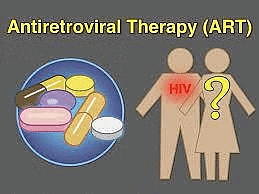
Context
On April 1, 2004, the Indian government launched Antiretroviral Therapy (ART) for persons living with HIV (PLHIV), marking a significant intervention in the fight against HIV/AIDS.
What is HIV/AIDS?
About:
- HIV/AIDS is a viral infection that targets the immune system, specifically CD4 cells (T cells), which are crucial for fighting infections.
- If untreated, HIV decreases the number of CD4 cells, making individuals more susceptible to infections and related cancers.
- AIDS represents the final stage of HIV infection, where the immune system is severely compromised and unable to combat infections effectively.
Causes of HIV/AIDS:
- HIV is transmitted through contact with infected bodily fluids like blood, semen, vaginal fluids, rectal fluids, and breast milk.
- Transmission can occur through sexual contact, sharing needles, from mother to child during childbirth or breastfeeding, and rarely through blood transfusions or organ transplants.
Symptoms of HIV/AIDS:
- Acute HIV Infection: Symptoms similar to the flu, such as fever, swollen lymph nodes, sore throat, rash, muscle and joint aches, and headache.
- Clinical Latent Infection: HIV remains active but reproduces at low levels, with few or no symptoms.
- AIDS: Severe symptoms include rapid weight loss, recurring fever or night sweats, extreme fatigue, prolonged lymph gland swelling, persistent diarrhea, sores, pneumonia, and unusual skin blotches.
Diagnosis of HIV/AIDS:
- HIV Antibody/Antigen Tests: Detect antibodies or antigens produced by the virus using blood or oral fluid samples.
- Nucleic Acid Tests (NATs): Look for the virus itself and can detect HIV earlier than antibody tests.
Treatment and Management:
- Antiretroviral Therapy (ART): Involves taking a combination of HIV medicines daily. ART can't cure HIV but controls the virus, enabling people to live longer, healthier lives and reducing transmission risk.
- Pre-exposure Prophylaxis (PrEP): A daily pill for those at risk of HIV, significantly reducing infection risk when taken consistently.
What is Antiretroviral Therapy (ART)?
About:
- ART is a crucial treatment for managing HIV/AIDS, aiming to suppress HIV replication, reduce viral load, preserve immune function, and improve quality of life for those living with HIV/AIDS.
Mechanism of Action of Antiretroviral Therapy:
- ART targets various stages of the HIV replication cycle, including viral entry, reverse transcription, integration into the host genome, and viral assembly and release, thus reducing viral load.
Components of Antiretroviral Therapy:
- Nucleoside Reverse Transcriptase Inhibitors (NRTIs): Prevent conversion of viral RNA into DNA (e.g., tenofovir, emtricitabine, abacavir).
- Non-Nucleoside Reverse Transcriptase Inhibitors (NNRTIs): Inhibit the HIV reverse transcriptase enzyme (e.g., efavirenz, nevirapine, rilpivirine).
- Protease Inhibitors (PIs): Block the HIV protease enzyme, preventing viral particle maturation (e.g., ritonavir, atazanavir, darunavir).
- Integrase Strand Transfer Inhibitors (INSTIs): Prevent integration of viral DNA into the host genome (e.g., raltegravir, dolutegravir, bictegravir).
- Entry Inhibitors: Prevent viral entry into cells (e.g., maraviroc, enfuvirtide).
Benefits of Antiretroviral Therapy:
- Viral Suppression: Reduces viral load, slowing disease progression and preserving immune function.
- Prevention of Opportunistic Infections: Helps prevent infections and complications related to AIDS.
- Improvement in Quality of Life: Allows individuals to lead healthier, more productive lives, reducing morbidity and mortality.
- Prevention of Transmission: Significantly reduces the risk of HIV transmission to sexual partners and from mother to child during childbirth.
How Has ART Evolved in Ensuring Effective Treatment?
Evolution:
- Initially, HIV/AIDS was a death sentence met with fear and stigma. The first antiretroviral drug, AZT (zidovudine), was approved in 1987, followed by more drugs in subsequent years.
- Access to these medicines was limited, except in high-income countries. The introduction of protease inhibitors in 1995 marked significant progress.
Global Efforts:
- In 2000, world leaders set a goal to stop and reverse HIV spread at the UN General Assembly’s Millennium Summit.
- The Global Fund to Fight AIDS, Tuberculosis, and Malaria was created in 2002 to advocate for universal access to HIV services.
- By 2004, India had an estimated 5.1 million PLHIV, with only 7,000 on ART.
Barriers to ART’s Evolution:
- High costs and limited access were major barriers. HAART (highly active antiretroviral therapy) was prohibitively expensive (USD 10,000 a year).
- HIV-infected individuals faced stigma and limited availability of ARTs.
Necessity for Free Treatment:
- The decision to offer free ART was groundbreaking. By November 2006, free ART was also available for children.
- Over two decades, ART facilities expanded to around 700 centres, with 1,264 Link ART centres providing free drugs to approximately 1.8 million PLHIV.
Effectiveness of ART:
- ART aims not just to start treatment but to maintain viral suppression, reducing disease transmission.
- By 2023, HIV prevalence among 15-49-year-olds fell to 0.20%, with the number of PLHIV down to 2.4 million.
Usefulness for Indian Population:
- India's share of PLHIV globally reduced to 6.3% by the end of 2023. Approximately 82% knew their HIV status, 72% were on ART, and 68% were virally suppressed.
- Annual new HIV infections in India declined by 48%, and AIDS-related mortalities fell by 82% since 2010.
Factors That Made ART Intervention Successful
- Patient-Centric Approach to Services: Success is due not just to free ART but also to complementary initiatives, including free diagnostics, prevention of parent-to-child transmission, and management of opportunistic infections and co-infections like TB.
- Incorporating Dynamic Modifications: The programme evolved with policies like early initiation of ART and the "Treat All" approach from 2017, ensuring ART initiation regardless of CD4 count.
- Promoting Universalization: The "Treat All" approach led to true universalisation, reducing virus transmission at individual and community levels.
- Affordable and Free ART: The programme offered free viral load testing and provided months of medicines to stable PLHIV, reducing patient visits, travel time, and costs, thus improving adherence and decongesting ART centres.
- Adding New Medicines: Newer, more effective drugs were added, such as Dolutegravir (DTG) in 2020 and a policy for rapid ART initiation in 2021.
Steps to Enhance ART Treatment Effectiveness
- Ensuring Sustained Supply and Availability: Consistent supply and availability of ART are crucial, especially in remote and tough terrains. Private sector engagement can enhance supply efficiency.
- Need for Constant Training: Staff must stay updated with the latest advancements through continuous training, emphasizing practical application of theoretical knowledge.
- Strengthening Integration with Other Programmes: Integration with other health programmes, such as those for hepatitis, diabetes, hypertension, and mental health, is essential for comprehensive care of PLHIV.
- Adopting a Multi-Sectoral Approach: Effective ART requires political will, sufficient funding, regular programme reviews, community engagement, patient-centric service modifications, and bridging policy-to-implementation gaps.
- Implementing National AIDS Control Programme (NACP): The fifth phase of NACP aims to reduce new HIV infections by 80%, reduce AIDS-related mortalities by 80%, and eliminate vertical transmission of HIV and syphilis by 2025.
- The 95-95-95 targets by 2025 aim for 95% of PLHIV to know their status, 95% of diagnosed individuals to receive ART, and 95% of those on ART to achieve viral suppression.
The free ART initiative has significantly contributed to controlling the HIV/AIDS epidemic in India, demonstrating the effectiveness of government-run public health programmes. The success of this initiative provides valuable lessons for other health programmes, such as a potential nationwide free Hepatitis C treatment initiative, accelerating progress towards eliminating Hepatitis C.
 |
Download the notes
Science and Technology: May 2024 Current Affairs
|
Download as PDF |
NICES Programme
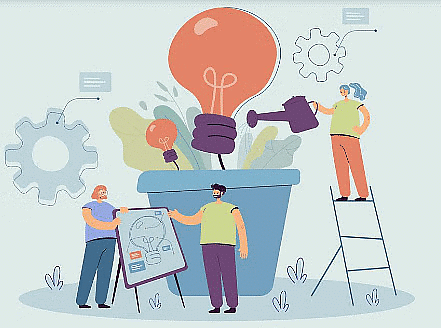
Context
The National Information System for Climate and Environment Studies (NICES) Program has extended invitations to Indian researchers to contribute to climate change mitigation efforts.
What is NICES Program?
- The NICES Programme is operated by the ISRO and the Department of Space.
- It was launched in 2012.
- It operates within the framework of the National Action Plan on Climate Change.
- NICES aims to enhance the participation of Indian researchers in addressing climate change-related challenges through multidisciplinary scientific investigations.
- Focus Areas: Potential areas for project submission include Space-based Essential Climate Variables (ECVs) and Climate Indicators, Climate Change Challenges, Weather Extremes, and Climate Services.
Activities held under NICES Program
- NICES invites project proposals from Indian scientists, academicians, and researchers affiliated with various governmental organizations, recognized institutions, universities, and departments.
- Project proposals should address climate change-related challenges.
- These projects are expected be completed within 3 years from the date of sanction.
Objective and Functionality
- The primary objective of the NICES Programme is to generate and disseminate long-term Essential Climate Variables (ECVs) derived from Indian and other Earth Observation (EO) satellites.
- These variables, spanning terrestrial, oceanic, and atmospheric domains, are crucial for characterizing Earth’s climate and monitoring changes over time.
Achievements and Impact
- Since its inception in 2012, NICES has developed over 70 geophysical products meeting stringent quality standards.
- These products have been instrumental in documenting climate change and its impacts, contributing to scientific understanding and evidence-based decision-making.
First Home-Grown Gene Therapy For Cancer
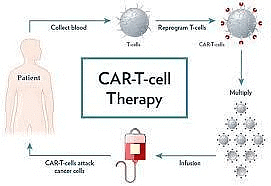
Context
The President of India has inaugurated the nation's first domestically developed gene therapy for cancer at IIT Bombay. This pioneering CAR-T cell therapy is the result of collaboration between the Indian Institute of Technology, Bombay, Tata Memorial Hospital, and the industry partner ImmunoACT.
About CAR-T Cell Therapy
CAR-T cell therapy, or chimeric antigen receptor T-cell therapy, is a form of immunotherapy that leverages the immune system to identify and destroy cancer cells. It involves genetically altering a patient's T cells to express CARs, which enable these cells to recognize and attack cancer cells with specific surface antigens.
Mechanism of Action:
- T cells are extracted from the patient's blood through a process called leukapheresis and genetically engineered to express CARs targeting a specific antigen on cancer cells.
- CARs consist of an extracellular antigen recognition domain, a transmembrane domain, and an intracellular signaling domain.
- After being infused back into the patient, CAR-T cells recognize cancer cells expressing the target antigen and initiate a cytotoxic immune response, leading to the destruction of cancer cells.
Development and Manufacturing Process
- T cells are isolated from the patient's blood sample and activated using cytokines like interleukin-2 (IL-2).
- The T cells are genetically modified using viral vectors (such as lentiviral or retroviral vectors) to introduce the CAR gene into their genome.
- The modified CAR-T cells are expanded in vitro to reach sufficient numbers for therapeutic infusion.
- Quality control tests are conducted to ensure the safety, purity, and potency of the CAR-T cell product before administration to the patient.
Clinical Applications:
CAR-T cell therapy has shown significant efficacy in treating certain hematologic malignancies, including:
- Acute lymphoblastic leukemia (ALL)
- B-cell non-Hodgkin lymphoma (NHL), such as diffuse large B-cell lymphoma (DLBCL) and follicular lymphoma
- Chronic lymphocytic leukemia (CLL)
Ongoing research is investigating the potential of CAR-T cell therapy for solid tumors, including glioblastoma, ovarian cancer, and pancreatic cancer.
Side Effects
CAR-T cell therapy can lead to severe side effects, notably cytokine release syndrome (CRS) and neurological toxicities.
- CRS: Characterized by fever, flu-like symptoms, hypotension, and organ dysfunction due to pro-inflammatory cytokines released by activated T cells.
- Neurological toxicities: Can include confusion, delirium, seizures, and aphasia, caused by immune-mediated inflammation in the central nervous system.
Prompt recognition and management of side effects are crucial, typically involving supportive care, anti-cytokine therapies (like tocilizumab and corticosteroids), and close monitoring in an intensive care setting if necessary.
About Cancer
Cancer is a group of complex diseases characterized by abnormal cell growth and proliferation, potentially arising in any tissue or organ due to disrupted cellular processes regulating growth, division, and death, leading to uncontrolled cell growth and tumor formation.
Types of Cancer:
- Carcinomas: Arise from epithelial cells lining organs, such as lung, breast, prostate, and colon cancers.
- Sarcomas: Originate from connective tissues, including bone, muscle, and cartilage.
- Leukemias: Develop in blood-forming tissues, like bone marrow, leading to abnormal proliferation of white blood cells.
- Lymphomas: Affect the lymphatic system, causing abnormal growth of lymphocytes.
- CNS Tumors: Occur in the brain or spinal cord, including gliomas, meningiomas, and medulloblastomas.
Causes and Risk Factors:
- Genetic Factors: Inherited mutations in genes like BRCA1 and BRCA2 increase cancer risk.
- Environmental Factors: Exposure to carcinogens (e.g., tobacco smoke, UV radiation, asbestos, and certain chemicals) raises cancer risk.
- Lifestyle Factors: Unhealthy habits such as smoking, excessive alcohol consumption, poor diet, lack of physical activity, and obesity contribute to cancer development.
- Viral Infections: Oncogenic viruses like HPV, HBV, and EBV can lead to specific cancers.
About Gene Therapy
Gene therapy is a revolutionary method aimed at treating genetic disorders by modifying or replacing defective genes. It holds the potential to address a wide range of diseases, including inherited disorders, cancers, and certain viral infections, by correcting underlying genetic abnormalities.
Types of Gene Therapy:
- Gene Addition Therapy: Introduces a functional copy of a gene to compensate for a defective or missing gene.
- Gene Editing Therapy: Uses tools like CRISPR-Cas9 to precisely modify the DNA sequence of target genes, correcting mutations or disrupting disease-causing genes.
- Gene Silencing Therapy: Suppresses the expression of specific genes using RNA interference (RNAi) or antisense oligonucleotides to treat conditions caused by overactive genes.
Steps in Gene Therapy:
- Identification of Target Gene: The defective gene responsible for the disease is identified through genetic testing and molecular analysis.
- Gene Delivery: A delivery system, often using viral vectors or non-viral methods like nanoparticles, transports therapeutic genes into target cells.
- Gene Expression: Inside the cells, the therapeutic gene integrates into the genome or produces functional proteins, restoring normal cellular function.
- Monitoring and Follow-Up: Patients are monitored for therapeutic efficacy and potential side effects, with long-term follow-up to assess the durability of treatment effects.
Applications of Gene Therapy:
- Monogenic Disorders: Promising for treating single-gene disorders such as cystic fibrosis, sickle cell disease, muscular dystrophy, and hemophilia.
- Cancer Treatment: Oncolytic viruses and gene-editing techniques are investigated for various cancers, targeting specific genetic mutations or enhancing immune responses against tumors.
- Neurological Disorders: Potentially treat conditions like Parkinson's disease, Alzheimer's disease, and spinal muscular atrophy by delivering therapeutic genes to affected brain cells.
- Infectious Diseases: Gene therapy approaches are explored to combat viral infections such as HIV/AIDS, hepatitis, and COVID-19 by disrupting viral replication or enhancing immune responses.
Challenges:
- Delivery Efficiency: Ensuring effective delivery of therapeutic genes to target cells while minimizing off-target effects and immune responses remains a significant challenge.
- Immune Response: The immune system may recognize viral vectors or foreign DNA, leading to immune reactions that limit the effectiveness of gene therapy.
- Long-Term Safety: Potential risks, including insertional mutagenesis, off-target effects, and unintended gene silencing, necessitate rigorous safety assessments and long-term monitoring of patients.
- Ethical and Social Implications: Ethical considerations surrounding gene editing, germline modifications, and equitable access to gene therapy raise complex societal issues that require careful consideration.
Conclusion
Gene therapy represents a promising shift in medicine, offering targeted and potentially curative treatments for a wide range of genetic and acquired diseases. While significant progress has been made, ongoing research and innovation are essential to address remaining challenges and realize the full potential of gene therapy in improving human health.
Coordinated Lunar Time
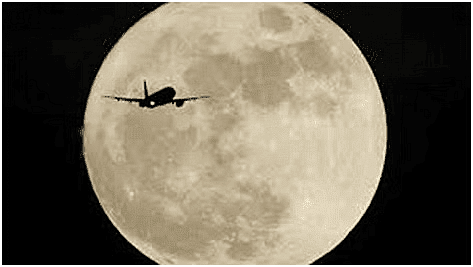
Context
Recently, the US White House officially directed NASA to establish a lunar time standard. This new time standard will be used by various international organizations and private companies to coordinate their activities on the Moon.
About Coordinated Lunar Time (LTC)
- It will offer a precise time-keeping benchmark for lunar spacecraft and satellites, crucial for mission accuracy.
- It will synchronize communication between satellites, astronauts, lunar bases, and Earth.
- A unified time standard is vital for coordinating operations, ensuring transaction reliability, and managing lunar commerce logistics.
Why there is a need for LTC?
- Due to the Moon's lower gravity, time passes slightly faster there compared to Earth.
- An Earth-based clock would appear to lose an average of 58.7 microseconds per Earth day on the Moon, along with additional periodic variations.
- These discrepancies could cause issues for lunar operations, such as spacecraft docking, data transfer, communication, and navigation.
How does Earth’s time standard work?
- Most global clocks and time zones are based on Coordinated Universal Time (UTC), an internationally agreed-upon standard.
- UTC is set by the International Bureau of Weights and Measures in Paris, France.
- It is maintained by a weighted average of over 400 atomic clocks worldwide.
- Atomic clocks measure time based on the resonant frequencies of atoms, like cesium-133.
- In atomic time, a second is defined by the cesium atom's vibration frequency of 9,192,631,770 cycles.
- The stability and accuracy of atomic clocks make them ideal for precise time measurement.
- Local time is obtained by adding or subtracting hours from UTC, depending on the number of time zones from the 0-degree longitude meridian (Greenwich meridian).
- Countries west of the Greenwich meridian subtract from UTC, while those east of it add to UTC.
ISRO’s ‘Zero Orbital Debris’ Milestone

Context
ISRO successfully launched the PSLV-C58/XPoSat mission, ensuring it left no space debris. They achieved this by converting the rocket's final stage into a small space station called POEM-3 (PSLV Orbital Experimental Module-3), which re-entered the Earth's atmosphere post-mission.
What is POEM?
About
- Developed by the Vikram Sarabhai Space Centre (VSSC), POEM is an affordable space platform.
- It repurposes the spent fourth stage of a PSLV rocket as an orbital platform.
- First used in the PSLV-C53 mission in June 2022, POEM was designed to orbit the Earth as a stabilized platform for conducting in-orbit scientific experiments with various payloads.
Features
- POEM is powered by solar panels mounted on the fuel tank of the rocket’s fourth stage and a lithium-ion (Li-ion) battery.
- It has a dedicated navigation, guidance, and control (NGC) system to stabilize its altitude along with helium control thrusters.
- It communicates with ISRO’s NavIC satellite constellation for navigation and has a telecommand system to interact with ground stations.
Achievement of POEM-3
- POEM-3 carried nine payloads.
- It completed 400 orbits around Earth within 25 days, during which the payloads performed their experiments.
POEM-3's Payloads
- Detailed information on the specific payloads was not provided.
Space Debris: A Challenge
Increasing Space Debris
- The rise in satellite launches has exacerbated the issue of space debris.
- Space debris in low Earth orbit (LEO) includes spacecraft fragments, rocket parts, defunct satellites, and fragments from objects broken up by anti-satellite missile tests.
- LEO, ranging from 100 km to 2000 km above Earth, hosts satellites for intelligence, communication, and navigation.
- ISRO's Space Situational Assessment report 2022 indicated that 2,533 objects were placed in space in 179 launches in 2022.
- With increasing satellite launches and anti-satellite tests, on-orbit breakups and collisions generate more fragments.
- ISRO estimates that by 2030, there will be around 60,000 space objects larger than 10 cm in size in LEO.
Threat to Several Space Assets
- Space debris travels at high speeds, up to 27,000 kilometers per hour, posing a significant risk to space assets due to their volume and momentum.
Threats on the Ground
- Recently, a metal chunk, likely a discarded battery pallet from the International Space Station, damaged a house in Florida by piercing through its roof and two stories.
Kessler Syndrome
- Space debris leads to:
- Unusable orbit regions due to excessive debris.
- The Kessler syndrome, where cascading collisions from one event create more debris.
How are Space Agencies Dealing with Debris?
Legal Provisions
- Currently, no international laws specifically address LEO debris.
- However, most space-faring nations follow the Space Debris Mitigation Guidelines 2002 from the Inter-Agency Space Debris Coordination Committee (IADC), endorsed by the U.N. in 2007.
Space Debris Mitigation Guidelines 2002
- These guidelines suggest methods to limit accidental in-orbit collisions, break-ups during operations, intentional destruction, and post-mission break-ups.
- They also advise against the long-term presence of spacecraft and launch vehicle stages in LEO to minimize interference in the GEO region.
Steps Taken by Other Countries
- NASA: Established its Orbital Debris Program in 1979 to reduce orbital debris and design equipment to track and remove it. The Space Force currently tracks debris and collisions in LEO but has not yet implemented debris-cleaning technology.
- European Space Agency (ESA): Adopted a ‘Zero Debris charter’ aiming for zero space debris by 2030, urging other agencies to follow suit.
- China: Deployed a large spacecraft to de-orbit its defunct satellites.
- Japan: Initiated the Commercial Removal of Debris Demonstration (CRD2) project to address space junk.
India's Efforts
- Apart from the POEM missions, ISRO has established a Space Situational Awareness Control Centre to protect high-value assets from close approaches and collisions.
- An Indian start-up, Manastu Space, is developing technologies for in-space refueling, de-orbiting old satellites, and extending satellite lifespans.
Angara-A5 Rocket
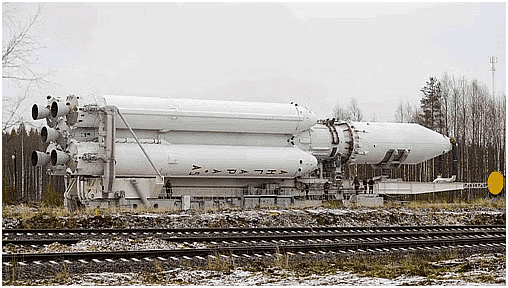
Context
A Russian rocket blasted off for a test flight on Thursday at the third try after previous launch attempts earlier this week were aborted in the final seconds of the countdown.
Angara A5 and significance
- The Angara A5 is a heavy-lift launch vehicle designed to carry payloads into space.
- The rocket was launched from the Plesetsk Cosmodrome in northwest Russia and is part of Russia's efforts to modernize its space program.
- This three-stage marvel aims to deliver 24.5 tonnes of payload into low orbit, replacing the veteran Proton M.
- The launch site, nestled in the Amur region's forests, strategically borders China and lies 1,500 km from Vladivostok.
- The successful launch is seen as a significant milestone for Russia's space industry, demonstrating its capability to launch heavy payloads into orbit.
|
1045 docs|719 tests
|
FAQs on Science and Technology: May 2024 Current Affairs - Current Affairs: Daily, Weekly & Monthly - CLAT
| 1. What are the symptoms of West Nile Fever? |  |
| 2. How does xenotransplantation work? |  |
| 3. What is the significance of the Indian Space Situational Assessment Report 2023? |  |
| 4. What are some common side effects of Covid-19 vaccines? |  |
| 5. How does Magnetic Resonance Imaging (MRI) work? |  |







